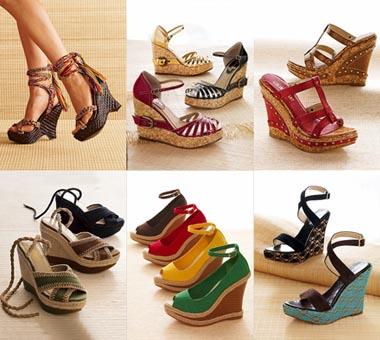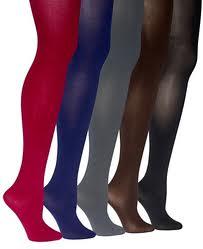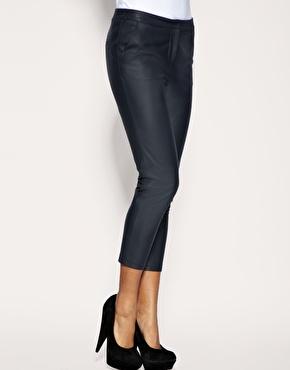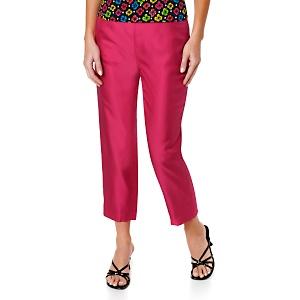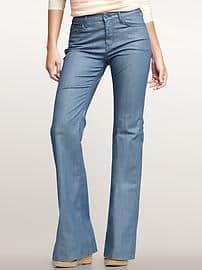- Wearing white in winter is often thought of as inappropriate, but when done properly it can add lightness to any dreary day. Choose winter fabrics like wool or cashmere in an off-white shade, which when worn in the winter is commonly known as winter white.
- Beware of the four letter word – SALE – especially this time of year. Just because it’s on sale doesn’t mean it’s perfect for you. Before you buy, ask yourself: is the item the right colour, style, fit and quality for me and my lifestyle? If not, put it back. It’s not good enough for you.
- While doing multiple wardrobe audits I’ve seen so many pieces of clothes with the price tags still attached – never used. Some people sense – correctly – that after the purchase, it doesn’t work for them. Keep your closet free of useless clutter by donating these clothes or selling them to pay for new, investment-quality clothes that you will wear.
- Research tells us that the more skin we show in the workplace, the less we are taken seriously. Wearing short skirts and showing cleavage are a distraction to both men and women.
- Tired of your winter coat? Put a colourful, patterned scarf around the collar to add some life to your look. Add a pair of leather gloves in one of the colours in the scarf, and you will be transformed from drab to fab.
- Allow yourself enough time in the morning to look well-groomed for work – every single day. Realize that the tiniest imperfections such as scuffed shoes, chipped nail polish and wrinkled clothing can add up and make you look unprofessional. When you know you look great, you’ll feel great and exude confidence all day long.
- Back to the all-important jacket: If you’re not sure how to dress for an occasion, wear a jacket over a simple dress. If the occasion turns out to be dressy, just remove your jacket and add a necklace.
- Dark hose look great during the winter months, and should always be worn with dark shoes or boots. Change to nude hose in the warmer months, from April to September.
- Don’t overdo it on accessories – we all know someone who wears too much jewellery, and with the sheer amount of rings on their fingers or bangles on their wrists – you can hear them before you see them. Keep it simple – less is more.
- Cover any tattoos and remove facial piercings during your work day or before an interview – you can purchase skin-coloured plugs that prevent piercing holes from closing. Avoid wearing too many earrings, instead choosing only one pair to wear during the day.
- You cannot go wrong with a simple and elegant closed-toe pump that has a heel no taller than two to three inches.
- Keep your makeup neutral in the work place – some mascara, blush and a soft shade of lipstick will do wonders. False lashes, overdone eyes and dark lipstick will make you look unprofessional.
- Many of us have been over plucking our brows for years. Spend the $8 and have your eyebrows waxed by a professional – they can work magic on your brows by shaping them in proportion to your face. Use an eyebrow pencil to fill in sparse areas.

Image Tips
When I tell people that I am a Certified Image Consultant, they look a me like I have three heads,and usually make the assumption that I work in fashion. It’s not unusual for people who work in the retail clothing business to refer to themselves as image consultants.
As image consultants, it is important to inform people that a Certification program is available, requiring the Image Consultant to successfully pass an exam covering a wide range of topics.
Certification shows clients, colleagues and the media that you have achieved a competent level of training and knowledge in the image field and that you keep abreast of current thinking and technical knowledge.
AICI’s Mission is to Set and promote the highest professional standards for image consultants in Appearance, Behavior and Communication.
Yes, in addition to Appearance, we also need to share that we provide services that deal with Behavior and Communication, such as Dining Etiquette, Body Language, Professional Communication and Social Etiquette.
Why did I choose this profession? For two reasons – I am creative and I have compassion. I grew up with a strict Chinese father who insisted his daughters attend university. If I had a choice, I probably would have studied fashion or interior design. But as an obedient daughter, I achieved a Masters Degree in Clinical Social Work from the University of Toronto. Although it was not my first choice, I realized that providing therapy felt right because of my natural compassion for people. After years of counseling people in pain and from my own years of maturing, it became apparent to me that the world is judgmental. I decided to research the relationship between a good image and getting what you want, and the findings supported that the better one looked, the more benefits they would enjoy, such as getting that special job, a promotion, or passing the line up to enter an exclusive club.
Image consulting is not much different . Some of my clients come to me in pain because they are tired of being invisible, so I work with all ages and types of people to show them their true potential. The result is increased self-esteem and a positive impact on their social and professional lives. Everyone has the right to feel good about themselves.
So, Image Consulting is not just about wearing the right clothing – it is about self-esteem and increased self-awareness, which is liberating and empowering. It is important to teach the public that we are qualified professionals who make a difference in our clients’ lives.
The importance of having a good image is not a new phenomenon.
In 1854, Henry David Thoreau said:
“I wonder how long men would retain their ranks if divested of their clothing”.
Image mattered then, and it matters now.
Lynda Jean, BA, MSW, AICI
Certified Image Consultant
www.lyndajean.com
702-845-8369
416-960-1333
The wardrobe audit can be a rewarding experience. Imagine this – you have had a Colour and a Style Analysis done, and at this point you know what colours and styles are perfect for your complexion and body. The next logical step is the Wardrobe Audit, which allows you to put your colour and style theory into practice.
Most of us wear only 20% of our wardrobe – yes, 20%! This is due to the fact that we own unsuitable clothes that take up space and confuse us. My goal, after the wardrobe audit has been completed, is for you to have pieces that can be mixed and matched – and for you to wear 100% of your clothes and accessories – so that you look and feel good all of the time.
I have yet to experience a client who was not somewhat resistant to this process. Let’s face it – at the best of times, cleaning out our closets can be quite overwhelming. For some, it is a reminder of the purchase mistakes we have made and the money we have wasted. But don’t be too hard on yourself. We all make these mistakes, and your approach to your wardrobe will now be with a keen and discriminating eye, using colour and style knowledge that you did not have before.
We live in a privileged society, and most of us have too many clothes – often too many of the wrong clothes (we like them but they don’t like us back). Our European counterparts have fewer – yet very carefully selected – articles of clothing, due to smaller closets.
Some of the resistance I referred to earlier involved what I call the “Just Fors”. The “Just Fors” could consist of 15 T-shirts used only for wearing around the house, sleeping, running to the dry cleaners or running to pick up the kids – why is everyone running? Instead, why not streamline the 15 T-shirts and pick the best 5 that are the right colour, fit, and style? Why not buy a pair of comfortable pyjamas or wear the ones that sit in your drawer?
Using a methodical process, the client and I go through each garment and accessory and sort them in the following groups:
- Keep – these are clothes that are the right colour, style, fit and proportion for your body – you feel good in these clothes.
- Give to Family/Friends – clothes that do nothing for you but could look great on someone you know.
- Charity – clothes that would benefit a charity.
- Consignment Shops – for slightly used, current and upscale items – keep in mind you will get a fraction of what you paid if they sell.
- Alterations – these are clothes that suit you but that you may not have worn because they never felt right – they might just need a hem or tapering.
- Dry Cleaning – sometimes we put clothes away without noticing soil marks.
- Repairs – often these are shoes or boots that need heels, etc. Remember, even though we cannot see our heels, others do.
- Sentimental Items – these are special pieces that deserve a special place, for example, in a Memory Box.
- Pause or Maybe Pile – clothes that may have potential and that will be revisited after the wardrobe has been streamlined.
- Another Closet – most of us have clothing that no longer fits, but may fit us in the future. These pieces need to be placed in another closet or area, since they cannot be worn at this time.
Hidden Treasures – Very often I find what I call “hidden treasures”, which are items that are unique yet sitting in another closet or tucked away in a drawer. These are often beautiful pieces of jewellery and scarves that are unused due to confusion as to how to wear them. I once worked with a client who had a number of beautiful silk scarves tucked away for years in a drawer. The reason she didn’t wear them? She was saving them for a “special occasion”! Each day is a special occasion, and we deserve to look and feel good all of the time. Needless to say, they were taken out of their drawer and she was shown how to skilfully put them on her purses, around her neck, and around her ponytail!
When all of your clothes have been put in their proper place, you will be left with a smaller, more appropriate wardrobe for your lifestyle. You will be surprised at the number of creative outfits that can be put together once your wardrobe is streamlined!
Sometimes there are missing pieces that are needed to complete your wardrobe, so the next step is shopping for them.
Getting the perfect wardrobe is a process, and you may not be able to part with everything during the first audit. Over time, however, with your newfound knowledge and improved appearance, you will eventually have the perfect wardrobe.
Lynda Jean
Certified Image Consultant
A popular shoe for this spring and summer is the platform wedge. Available in a variety of colours and styles, this shoe looks good on everyone. The platform gives you extra height, and who can’t use a few more inches? It also provides more comfort than heels because the platform is distributed evenly.
Instead of thinking of black, navy and beige as neutrals, try the metallic shades such as bronze, pewter, silver and light gold. You’ll find that they will go with everything!
Lynda Jean
Certified Image Consultant
There’s a real difference between these types of leg coverings and each one is going to a different place.
Starting with the most delicate hose, sheer hose expose more leg and are therefore sexier. They are best worn with sexy high heel shoes for evening wear. Remember, the lower the vamp on the shoe (imagine toe cleavage), the more sensual the look.
Opaque hose are thicker than sheer hose but not as heavy as tights. They can be worn with high, medium or flat heeled shoes and are best for day wear. Unlike sheer hose, they come in an array of colours.
Tights are the thickest hose and can be worn under a long sweater, substituting as pants. Ballerinas wear tights because they are the most durable. Since this look is the most relaxed, they are best worn with casual shoes or boots on the weekend.
Lynda Jean
Certified Image Consultant
The trench coat has long been a wardrobe staple – even today. I usually think of the detective Dick Tracy, always clad in his beige one. For a long time, the trench came in very basic colours, like navy blue and beige. The traditional trench always had epaulets, slanted slit pockets and was double breasted with a belt. The name brand that we associate with this coat is Burberry, and we all recognize the familiar plaid lining. This brand is beautifully structured, but also quite expensive.
Evidence that fashion is less rigid and more versatile today is seen in the numerous colours and styles available. H & M will often carry affordable, colourful trench coats that come in varying styles – unlike the traditional Burberry – but still look like a trench coat. A few years ago at Kenneth Cole, I bought a gorgeous white one with silver buttons and no epaulets. Although it still looked like a trench, it was less busy and suited my small frame.
Some of the better quality trench coats come with a warm zip-out lining, making them more functional for our four seasons.
Everyone can wear a trench coat. Be sure you choose a colour that harmonizes with your complexion, and be particular about the fit. Because the traditional style is so busy, ensure that it fits properly, especially in the shoulders. If the sleeves are too long, have them shortened before you wear it.
Just like any article of clothing, the trench coat can look great on anyone, as long as the colour, style, and fit work with your complexion and body.
Lynda Jean
Certified Image Consultant
You can thank the dotcom era of the early 90’s for the casual confusion in the workplace. When these young entrepreneurs emerged and offered employees not only jobs but a relaxed dress code, corporations had to compete and offer the same.
By virtue of women’s bodies, we have more to lose than men by dressing inappropriately. So be sure to dress like you are a part of the workplace.
Don’t wear mini skirts, noisy flip flops or excessive jewellery. The less skin you show the better. When you expose your cleavage, no one is taking you seriously.
Stick to the basics – jackets, pants, skirts and dresses. You can still express yourself, but with more subtle accessories. You will be taken seriously and get more recognition for your hard work.
Lynda Jean
Certified Image Consultant
Yes, everyone can wear capris. I am often asked this question by my clients because they never feel good in them. The problem, I think, lies with the manufacturers. Very often the capris are made too wide and too long, and women don’t think about altering them.
There are different styles of capris. My favourites are the shorter (just below the knee) and tight capris from the 50’s. These look very sexy and feminine. These can be worn with flats, wedges or heels. Grace Kelly wore them on the island of Capris, Italy, where they were given their name.
Another style of capris are the longer ones. With these you have to be careful that they are not so long on you that they look like flood pants (pants that are too short). They tend to be wider and are worn with casual shoes.
Out of the store, capris usually need to be shortened and tapered in proportion to your height and bone structure. If you are tiny boned, then the shorter, tighter capris will suit you the best. If you are a strong boned person, the longer and slightly wider ones will suit you. Just work with your body and keep your clothing in proportion to it.
Lynda Jean
Certified Image Consultant
After 40, women’s bodies change – gaining weight in unwanted places. For this reason, it’s important to choose jean styles strategically. Jeans come in a number of different shades – not just dark or light denim, but other colours as well. If you want to look smaller, stick to dark colours.
If you are self-conscious about a protruding tummy, try to find flat front jeans with a side zipper. These jeans do not have the traditional front zipper and buttons, which only add volume to your midsection and highlight undesirable bulges.
Another important factor about jeans is the leg width – should you wear skinny jeans, straight cut jeans, boot cut or flare? To help you determine this, ask yourself if you are low hipped or high hipped. Women who are low hipped are wider at the leg break and look better in a boot cut or flared jeans, which keep in proportion to their hips. Women with straight or high hips look better in skinny or straight cut jeans.
Stay away from trendy jeans such as the ripped or elaborately decorated ones, which will draw attention to unflattering areas. Always check that your jeans have stretch in them for comfort. A great brand for 40+ women is Not Your Daughter’s Jeans – HYPERLINK “http://www.nydj.com” www.nydj.com. They are designed with a criss-cross panel to tuck in your tummy and lift you. These beauties are made with stretch denim and come in a multitude of colours and styles.
Lynda Jean
Certified Image Consultant
A closet full of clothes and nothing to wear – sound familiar? The truth is that most of us, particularly women, wear only 20% of what is hanging in our closet. So why is this happening?
One of the reasons is that many of us do not know ourselves well. What I mean is that how many of us know, for example, the difference between the colours that enhance us and those that blend us into the wallpaper? Without this knowledge, we end up purchasing clothing without colour discrimination. When we put on the clothes in colours that diminish us, we know subconsciously that something is wrong, so we do not wear them – and we repeat this process over and over again. By investing your time with an image consultant to do a colour analysis, you will not only learn to recognize your best colours, but also the perfect shades, intensity and values of those colours. For example, everyone can wear red, but what you need to know is if it is a blue or yellow red, muted or shiny, and light or dark? With this knowledge, you will not only shop smarter and faster, but you will stop wasting your money.
How many of you know your body? Women, in particular, are so hard on themselves, focusing on their areas of concern instead of their attributes – without reminding themselves that there are some genetic parts we cannot change. For example, if we are short, we come by it honestly by our genetic makeup. If we are wide hipped or have short legs, we come by it honestly. By knowing your body and its limitations, you will be more open to accepting it. By having a Style Analysis done by a certified image consultant, you will not only become fully aware of each aspect of your body, but also how to strategically dress it. You will learn how to use colour, shape, lines and proportion to dress your body to accentuate your best features. You will no longer lust over the dress that you love on the mannequin if you know it doesn’t love you back. You will know by looking at a garment if it is the right style for your body. And you will understand why those clothes that you brought home from the last sale have just been sitting in your closet.
Many of us just shop in a fog without any direction or guidelines – and are often so overwhelmed with the shopping experience that we do not take the time to consider our purchases. How can we come down to earth to ensure we make the right decisions? You can start by asking yourself four things – is it the right colour, style, fit and proportion for me? Do I feel good when I put it on? If not, put it back – chances are you will not even think about it tomorrow and you will have saved yourself your hard earned money.
Once you recognize your best colours and styles, you will attain the ultimate goal – to actually wear everything in your closet and look and feel great!
Lynda Jean
Certified Image Consultant
Are you interested in this service or have any questions? Get in touch with Lynda now!
Testimonials
I had a huge amount of black clothes in my wardrobe and never realized how washed out they made me look until I stopped wearing them. I also thought I could wear more or less any colour, and I didn’t give much thought to emphasizing what looked BEST. Lynda really taught me to be more discriminating, choosing colours that made me come alive.
Madison had a wonderful time with you in your Manners Matter course. It was nice to see her so enthusiastic to teach me some new things. I noticed her posture was better that first day :) She was proud to teach her younger brother as well. We will definitely like to take that class again.
Lynda's professional etiquette seminar is a must for any business wishing to ensure that its representatives know how to behave appropriately in the corporate world. My front line employees usually make the first impression of my firm on potential clients and professional colleagues; therefore I consider it essential that they are polished and confident in every situation.
Lynda presents this difficult topic in an easy and approachable way, making people feel comfortable to ask questions without awkwardness.This seminar brings real practical results. Now I feel confident that my employees have the skills they need to represent my firm in the most professional way possible. In addition, my staff now feel much more comfortable in both business and social situations.
Even after having spent only a few hours with you, I still keep your advice in mind when dressing for work or shopping for new clothes. It helps a lot in simplifying the process for me and making it more enjoyable (or at least much less painful) than it otherwise would be. It's especially important for me to maintain an image of professionalism and respect and I've found that the simple tips you've given me allow me to achieve this easily and inexpensively.
When Lynda went through my wardrobe with me, her eye for what worked and what didn't work helped me tremendously. What remained became the 'bones' of my wardrobe and I felt as if a huge depressing burden had been lifted from my shoulders. It's like losing weight. It is so much easier now to make smarter fashion decisions. Now I get compliments on what I'm wearing.
Our organization, like many others, faced a challenge with our younger staff: how to define for them what proper business attire means in today's workplace. We turned to Lynda Jean and are delighted we did so.
Lynda, through a "Lunch 'N Learn" session, brought down to earth, practical advice to our staff in a way that was informative without being condescending or crossing any human resources boundaries.
I am pleased to be able to say that we had very positive feedback from our staff on Lynda's presentation and, equally importantly, we have noticed a definite improvement in our staff's attire.
We operate a first-class service to our High Net Worth clients and, consequently, it is critical that all of our various staff members are well trained in proper etiquette.
Lynda Jean’s four-hour tutorial was a very helpful way to teach our team proper dining skills, courtesies and workplace dress and behavior. Lynda Jean presents an informative, pleasant and very useful set of skills that we all enjoyed and learned from.
I highly recommend her tutorial as both introductory training and on-going refresher courses for everyone from new employees to Senior Executives. Her course includes both an e-book and reference guide as excellent take-aways.
Lynda Jean's recent Professional Etiquette Presentation to law students at William S. Boyd School of Law, University of Nevada, Las Vegas, was invaluable and very appropriate for our students preparing to work in the field of law. Legal profession employers seek graduates who not only possess strong legal skills but are also able to demonstrate professional presence. Lynda's presentation provided the necessary building blocks for our current students and recent graduates to understand the process of becoming a successful lawyer.
